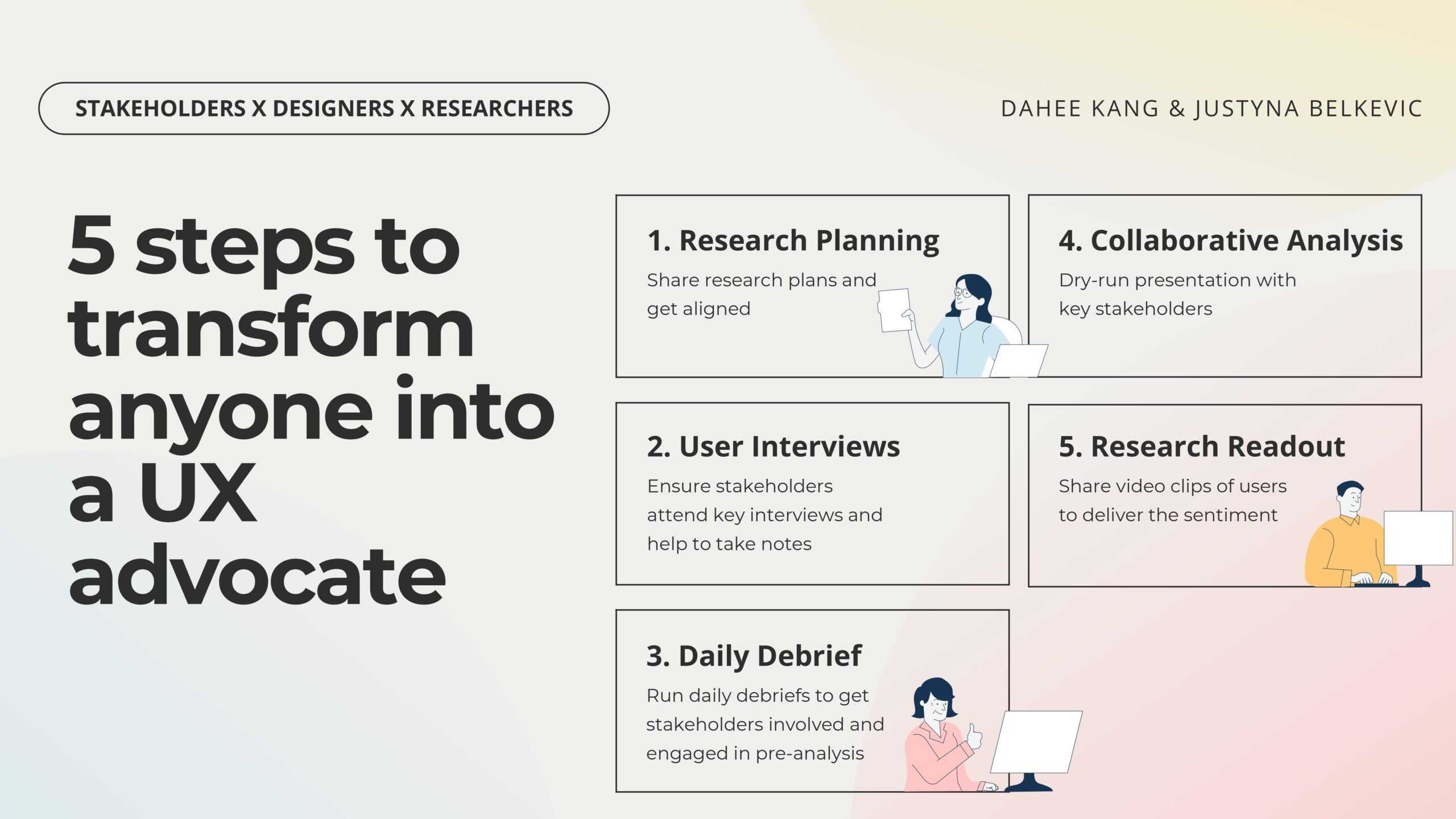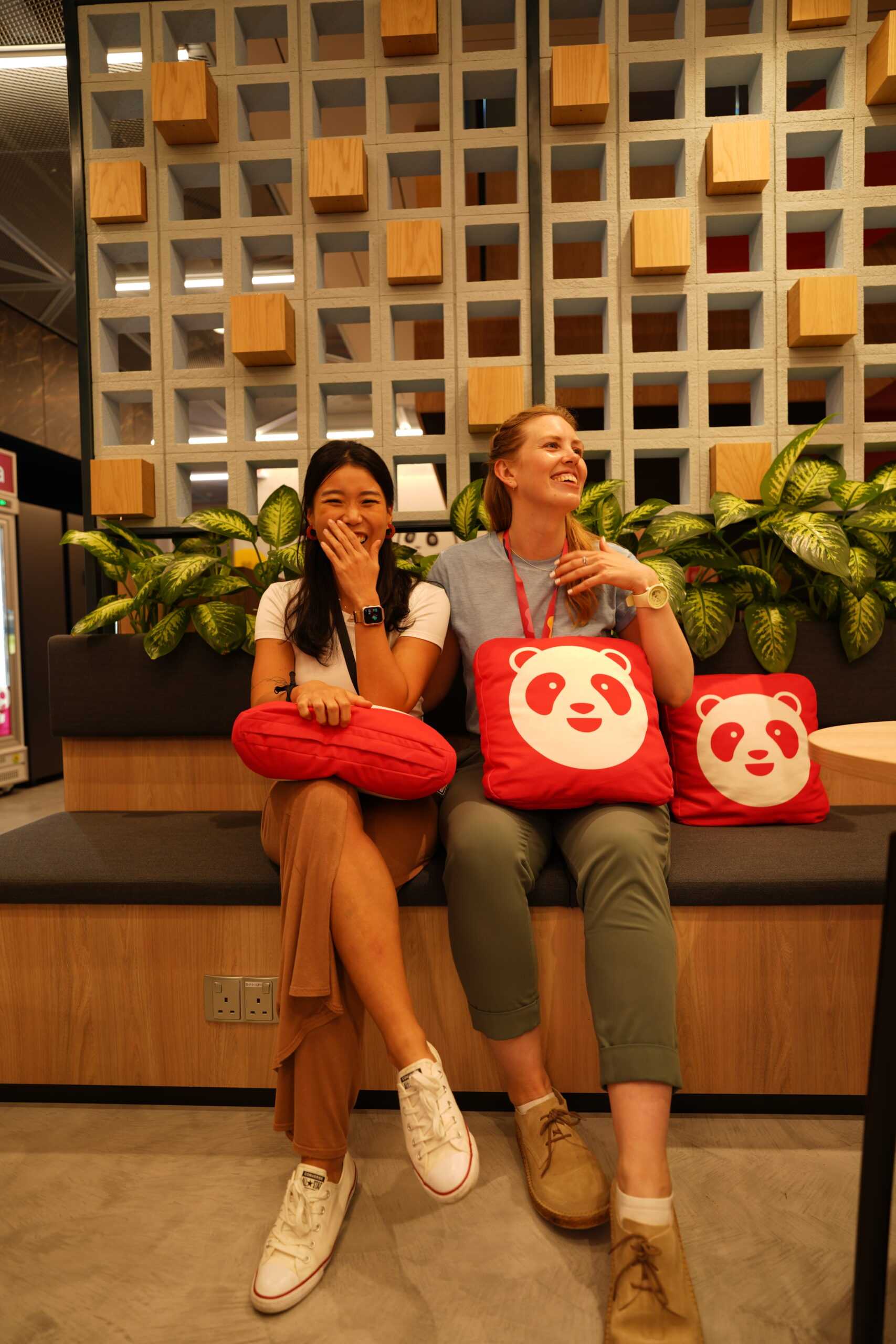Stakeholders often perceive the UX as a time-consuming & skippable process. “We already know XYZ. We don’t have time to afford to do research. Is insight from 5 users really trustworthy?
As a UX practitioner, you know that gaining buy-in from stakeholders is essential to the success of your projects. But what if they’re not already sold on the value of UX design? Recently, we had a project that started with doubts from stakeholders but ended with a team full of UX advocates.
In this post, we would like to share the lessons and tips we’ve learned from our recent project.
1. Make the business case for the design and welcome all the questions
Your stakeholders may need to be more familiar with the value of design, so it’s essential to make a case for why it’s vital to the success of your project. Explain how design can help to improve the user experience, increase conversion rates, and drive business results. Use examples and goals that are valuable for them, and start these conversations early – before the project kicks off.
Remember – no one challenges without reason. Understanding the ‘whys’ of the main stakeholders will help you to uncover what business goals and metrics are the most important to them. Above all, you will have an insight into their worries. Equipped with this knowledge, you can create a design and research plan that mitigates their worries and shows how design can impact the metrics and goals they care about.
(Tips) How we did it:
- In the planning stage, give two or three options for a design plan with connected risks and benefits (as an example: one plan with the user research and one without). This way it will be easier for the stakeholder to choose a way forward.
- Align clear goals from the get-go. Make sure that terms and definitions mean the same for all team members.
2. Get them involved early to build trust
The best way to get stakeholders on board with your project is to involve them from the outset. Invite them to participate in user research, help to define the project goals, and provide feedback on early designs. Getting them involved early will help them understand the value of design and build trust.
It will take time and effort to build a relationship founded on trust, sometimes maybe even as long as 6 or more months. However, such a relationship is a crucial puzzle piece to a successful designer and stakeholder long-term collaboration. If stakeholders trust you in your decision-making, you can move to strategic work more quickly.
(Tips) How you can do it:
- Make them feel heard online and offline
- Prioritise challenges and ideas together
- Create one communications channel (perhaps a Slack channel?)
- Keep them regularly updated on the progress (if you have a chance – over-communicate)
- Don’t omit chances for social interactions so that they get to know you as a person, not just “another UX designer in a company x”
3. Work together through all highs and lows
Another key element you need is collaboration. Collaboration is a great way to create a sense of ownership and alignment throughout the project.
People are always in favor of their own ideas. Especially the stakeholders, who have their stakes in this project would appreciate making their own decisions. Helping them to feel this sense of ownership – making decisions with the information has helped us turn them into the biggest research advocates.
Surprises can be good. It can be a game changer. But it should come at the right time. It can come while we run the interviews and tests and uncover the surprising findings. But once they are uncovered, the earlier you share with the stakeholders and get aligned, the better. Collaboration can be a great way to get this alignment as early as you can.
(Tips) How you can do it:
- Get stakeholders to observe the sessions
- Hold daily debrief sessions to gather their observations & insights
- Hold collaborative analysis sessions to incorporate their perspectives and insights into the final analysis
- Make sure you educate the research principles along the way rather than taking their literal words into the report
4. Don’t jump into solutions too early
We instinctively want to fix problems quickly. Especially when they are clearly spelt out in a research readout presentation. However, as designers, we are there to remind everyone of the power of discovering and agreeing on the problem first.
It might feel counterintuitive to the stakeholders to spend a large chunk of time on the challenge rather than start discussing solutions. However, this will help to ensure that you are solving an actual problem, rather than a symptom of the problem and that all angles are being taken into account.
(Tips) How you can do it:
- Have minutes after the meeting so that you don’t lose track of what you spoke about
- Invite them to a pre-read of the user research sharing session, so that they are aware of what to expect
- Assure that there will be enough time to co-create solutions later
5. Build empathy with the stakeholders as much as you do with the users
It’s essential to make it feel for stakeholders that they are a vital part of the design-led project. Especially, because they are! Set up regular check-ins, listen actively and be open to any changes to the project plan. This will help to ensure that they feel invested in the project and that their feedback is being taken into account.
(Tips) How you can do it:
- Organise stakeholder interviews prior to the sprint 0 kickoffs
- Be proactive about following up—help make reviews easier for others
- Understand and remember their perspective while designing
Conclusion
There are a few key steps to take when trying to transform stakeholders into design advocates. First, it is important to clearly articulate the value of design and how it can help achieve business goals. Next, it is necessary to build trust with stakeholders by being transparent and honest about the design process. Finally, it is crucial to involve stakeholders in the design process as much as possible and get their feedback before making any final decisions. By taking these steps, you can help all stakeholders see the value in design and become advocates for the design process.


